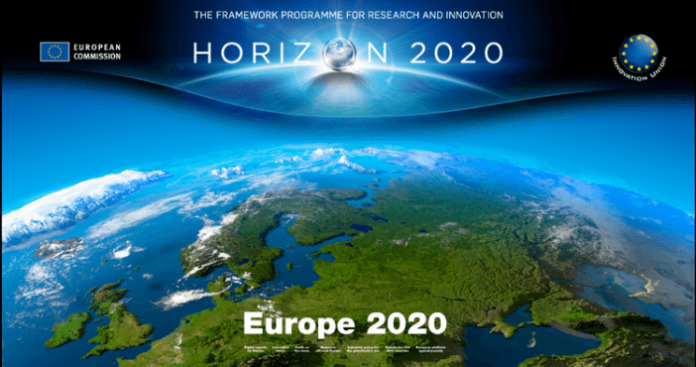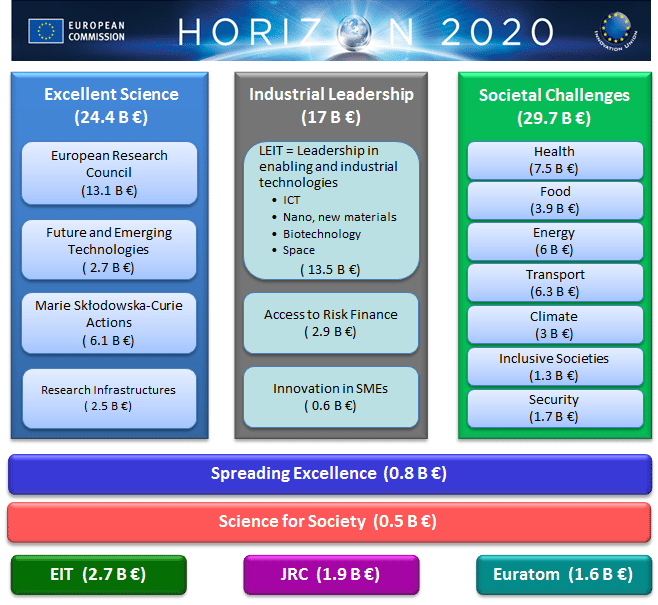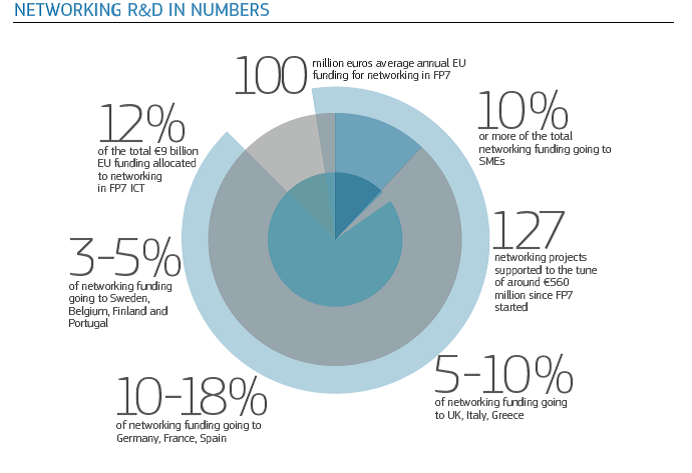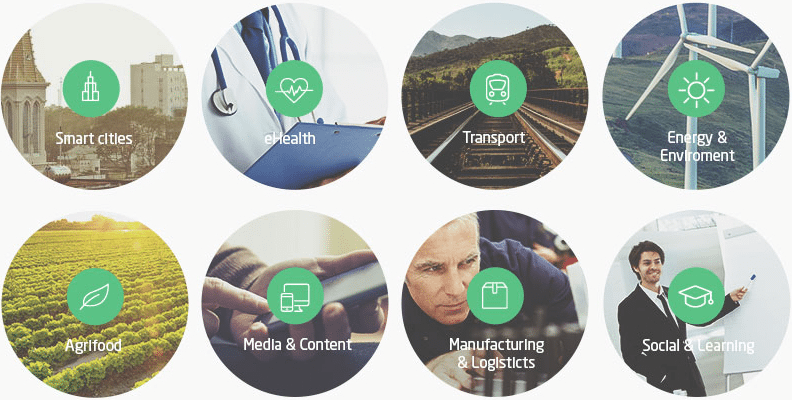This week on IoT Innovation, RCR Wireless News takes a look at Horizon 2020 IoT and 5G, the European Union’s €80 billion plan to drive job and economic growth while keeping the EU competitive globally
IoT Innovation is sponsored by Anritsu and Telecomcareers, a leading industry career site with over 240,000 searchable industry resumes.
On this week’s IoT Innovation program, RCR Wireless News reviews the European Union’s Horizon 2020 IoT 5g programs. Areas covered include:
- The global battle for IoT supremacy – China, EU, USA
- Horizon 2020 – Europe’s Digital Agenda Primer
- Horizon 2020 – Future of the Internet to include network and IoT technologies
- Finally, we will provide a links to resources
The global battle for IoT supremacy: China, Europe, and USA
Who is going to challenge China for IoT 5G dominance? Europe or the United States? On this week’s IoT Innovation episode, we provide viewers with a primer on Horizon 2020, the European Commission’s seven-year, €80 billion government sponsored policy plan aimed at driving jobs, economic growth and global competitiveness.
Kevin Ashton, who coined the phrase “The Internet of Things”, recently ranked China and Germany as number 1 and 2 in terms of IoT leadership. He went on to say that the United States was ready to drop from 3rd to 4th place behind South Korea.
What is at stake? In short, jobs and economic growth. IoT is much, much more than a dot com or millennial buzzword. IoT is effectively the digital Olympics, which will decide which country will be the ICT leader for decades to come.
To put things in perspective, consider the following statistics:
- GE believes that the “Industrial Internet”, their term for IoT, will add $10 to $15 trillion to global GDP in the next 20 years.
- McKinsey Global Institute predicts that IoT will have a total economic impact of up to $11 trillion by 2025.
- CISCO believes the IoT could generate $4.6 trillion over the next ten years for the public sector, and $14.4 trillion for the private sector.
- GSMA declared China the IoT leader in terms of IoT revenue and M2M connections
- Government policy appears to be driving IoT and 5G success. For example, China’s Made in China 2025 coupled with their “Internet Plus” strategy; Europe’s Horizon 2020 program and finally, Germany’s Industrie 4.0 IoT strategic plan
- The United States does not have a cohesive IoT strategy. Join us next week for a more detailed program on US Government versus Industry led IoT programs
Horizon 2020 – Europe’s Digital Agenda Primer
What is Horizon 2020? It is Europe’s seven year, digital agenda to invest $80 billion euros on three pillars and two specific objectives:
- Horizon 2020 – Three pillars
- Excellent Science – €24 billion
- Industrial Leadership – €17 billion
- Societal Change – €29.7 billion
- Horizon 2020 – Two specific objectives
- Spreading Excellence and Widening Participation
- Science with and for Society
Horizon 2020 History
- In 2011 the EU Heads of State and Government called on the European Commission to consolidate EU’s research and innovation funding under a single common strategic framework. After consulting with all major stakeholders, the Commission launched Horizon 2020.
- Funding is allocated by way of “Work Programs”
- In October 2015, The European Commission announced that €16 billion will be available for research and innovation in 2016/2017
- The work program initiatives are aligned Commission’s strategy for economic and job growth and European competitiveness in the decades to come
Of the €80 billion Euros, €16 billion will be spent in 2016/17 as follows:
- €2 billion – Small to medium enterprise (SME)
- €139 million – Internet of Things
- €118 million – Digital Security
- €50 million – Establish European Open Science Cloud
- €114 million – Automated Road Transport
- €232 million – Smart Sustainable Cities
- €436 million Mobility for Growth – Single Market
- €202 million Close Research/Innovation Gap
In April 2015, RCR Wireless News interviewed Alan Carlton, VP Interdigital about Interdigital’s participation in a Horizon 2020, 5G “fronthaul” proof of concept (POC) that included 21 vendors including Ericsson and Nokia as well as three major operators including Orange, Telefonica, and Telecom Italia. In the video below, Alan describes Horizon 2020, the front-haul program and the $700 million allocated to network technologies.
For more information about the European Commission’s plan for IoT, please visit Digital Agenda of the European Commission Horizon 2020 website. On the left side of the Digital Economy page, please note a link for “Future Internet”, which contains information on IoT and 5G work programs. See descriptions from website below:
- Startup Europe aims to strengthen the business environment for web and ICT entrepreneurs so that their ideas and business can start and grow in the EU.
- Future Internet – Includes links to 5G network technologies and IoT work programs
- Data – harnessing the benefits of access to valuable data on a large scale, to create solutions to problems like health issues and transport challenges.
- Cloud computing – working for better standards, safer contracts and more cloud in public and private sector.
- Digitising European Industry–
- Advisors – facilitate meetings with web entrepreneurs and expert groups to promote a more inclusive digital society.
Within the Future Internet section of the site, Horizon 2020 IoT 5G related work programs are further described as follows:
- Network Technologies
- Experimental platforms
- FI Public Private Partners
- Future Internet Forum
- Internet of Things
- Media Library
Network Technologies has been and will continue to be one of the biggest areas for investments. Network technologies are at the core of telecommunications and the Internet infrastructure. The European Commission is funding research that enables these technologies to offer Europeans an Internet for the future, where people, content and things will be connected.
As Interdigital mentions in the video above, over $700 million has been allocated to network technologies.
Networking R&D by the numbers (from the Digital Economy website):
- From 2007 – 2013, €100 million a year was invested into network technologies research and these investments continue in the new EU research Horizon 2020 programme.
- 7 out of the 10 largest telecom operators, as well as the world’s major telecom manufacturers have their headquarters and origins in Europe.
- Since the FP7 programme started in 2007, 207 networking projects have received about €780 million in EU funding; this is the highest share of the ICT FP7 priorities, representing €9 billion over the seven years of the programme’s duration (2007-2013).
- The objective of ICT research under the EU’s Seventh Framework Programme (FP7) is to improve the competitiveness of European industry – as well as to enable Europe to master and shape the future developments of these technologies so that the demands of its society and economy are met.
- The EU Member States have earmarked a total of € 9.1 billion for funding ICT over the duration of FP7 ; making it the largest research theme in the Cooperation programme, which is itself the largest specific programme of FP7 (with 64% of the total budget).
- Recommend downloading and reading the ‘ICT Work Programme 2013’
The Framework Program #7 (FP7) ICT Work Programme 2013 defines the priorities for the next wave of calls for proposals to be launched. New ICT programs are tied to FP7 priorities as further defined in the Digital Agenda . They reflect the input received from the:
- Programme Committee and Advisory Group ,
- the European Technology Platforms and
- a series of detailed consultations with the main stakeholders.
The ICT Work Programme 2013 under FP7 is divided into eight ‘Challenges’ of strategic interest to European society, plus research into ‘Future and emerging technologies’ and support for horizontal actions, such as international cooperation and pre-commercial procurement:
- Challenge 1 – Pervasive and Trusted Network and Service Infrastructures
- Challenge 2 – Cognitive Systems and Robotics
- Challenge 3 – Alternative Paths to Components and Systems
- Challenge 4 – Technologies for Digital Content and Languages
- Challenge 5 – ICT for Health, Ageing Well, Inclusion and Governance
- Challenge 6 – ICT for low carbon economy
- Challenge 7 – ICT for the Enterprise and Manufacturing
- Challenge 8 – ICT for Creativity and Learning
- Future and Emerging Technologies (FET)
Horizon 2020 – Future of the Internet to include network and IoT technologies
According to the Digital Agenda, the Internet of Things (IoT) represents the next step towards the digitisation of our society and economy, where objects and people are interconnected through communication networks and report about their status and/or the surrounding environment.
A recent European Commission study pegged the market value of the IoT in the EU one trillion euros of economic and employment growth by 2020.
In March 2015 the European Commission initiated the creation of the Alliance for Internet of Things Innovation (AIOTI) and in May 2015, adopted The Digital Single Market (DSM) to accelerate IoT programs across the region.
The DSM consolidates initiatives on security and data protection, which are essential for the adoption of IoT. Most importantly, the DSM announces an initiative on the Data economy (free flow of data, allocation of liability, ownership, interoperability, usability and access) and promises to tackle interoperability and standardisation.
The IERC-Internet of Things European Research Cluster groups together the IoT projects funded by the European research framework programs, as well as national IoT initiatives. The aim of European Research Cluster on the Internet of Things is to address the large potential for IoT-based capabilities in Europe and to coordinate the convergence of ongoing activities.
The requirements of IoT feed into the research on empowering network technologies, like 5G and Future Internet Public Private Partnerships.
On the application side, initiatives like Sensing Enterprise and Factory of the Future help companies use the technology to innovate, while experimental facilities like Future Internet Research and Experiment (FIRE) are available for large-scale testing.
Here is a short video about Future Internet Public Private Partnerships (FI-PPP)
The Future Internet Public Private Partnership Programme is implemented via three phases:
- Phase 1, 2011-12, budget 90 million euros
- Laying the technology foundation
- Defining “use case scenarios” in different industry sectors
- Making an inventory of available (public) infrastructures via capacity building
- Programme support
- Phase 2, 2013-14, budget 80 million euros
- Developing use case pilots and platforms
- Setting up infrastructures
- Phase 3, 2014-16, budget 130 million euros
- Expansion of use cases by developing applications and services
- Extending the technology foundation
Up until early this year, the Internet of Things emerged through vertical silos and applications. Recognizing this trend, he European Commission, together with the Internet of things European Research Cluster (IERC) organized a high level meeting to form Alliance for Internet of Things Innovation (AIOTI). See website AIOTI website.
AIOTI consist of a Board Steering Committee and Working Groups (WG). WGs are organized around the following areas of IoT development (From Digital Agenda website):
- WG 1: IoT European research cluster – The “IERC” – IoT European Research Cluster – is bringing together EU-funded projects with the aim of defining a common vision of IoT technology and addressing European research challenges. This working group builds on the work of the IoT Research Cluster (IERC). Chair: Ovidiu Vermesan (Mr)/SINTEF
- WG 2: Innovation Ecosystems – The “Innovation Ecosystems” working group aims at designing actions to develop innovation ecosystems by stimulating startups, the use of open IoT platforms and linking up between large and small companies through open innovation. Chair: Kees van der Klauw (Mr)/Philips
- WG 3: IoT Standardisation – The “IoT Standardisation” working group implies the mapping of existing IoT standards and gap analysis, as well as strategies and use cases to develop (semantic) interoperability. Chair: Patrick Guillemin (Mr)/ ETSI
- WG 4: Policy issues (trust, security, liability, privacy) – The “Policy Issues” working group implies the identification of existing or potential market barriers that prevent the up-take of IoT in the context of the Digital Single
- Market, as well as Internal Market perspective. Chair: Robert MacDougall (Mr)/ Vodafone
- WG 5: Smart living environments for ageing well (e.g. smart house)- The “Smart living environment for ageing well” working group refers to smart homes and smart living environments that can support people in staying active, independent and out of institutional care settings. This will lead to reduced costs for care systems and better quality of life for vulnerable categories of citizens (elderly, citizens with various disabilities etc). Chair: Mustapha Bouraoui (Mr)/STMicroelectronics
- WG 6: Smart farming and food security – The “Smart farming and food security” refers to IoT scenarios/use cases that would allow monitoring and control of the plant and animal products life cycle from farm to fork. Chair: Luis Pérez Freire (Mr)/Gradiant
- WG 7: Wearables – The “Wearables” refers to IoT solutions that integrate key technologies (e.g. nano-electronics, organic electronics, sensing, actuating, communication, low power computing, visualisation and embedded software) into intelligent systems to bring new functionalities into cloths, fabrics, patches, watches and other body-mounted devices. The WG could focus their works on healthcare, well-being, safety, security and infotainment applications. Chair: Kit Lam (Mr)/ Samsung
- WG 8: Smart cities – The “Smart Cities” working group refers to IoT solutions used by a city in order to enhance performance and wellbeing, to reduce costs and resource consumption, and to engage more effectively and actively with its citizens. Key ‘smart’ sectors may include transport, energy, health care, water and waste. Chair: Sergio García Gómez (Mr)/ Telefonica
- WG 9: Smart mobility (smart transport/smart vehicles/connected cars) – The “Smart mobility” working group refers to IoT solutions that allow for increased multi-modal mobility, more efficient traffic management, a dynamic road infrastructure, automated road tolling, usage-based insurance and improved policy making through the analysis of road usage data. Chair: Marko Häckel (Mr)/Bosch
- WG 10: Smart environment (smart water management) – The “Smart environment” working group refers to IoT solutions that improve water management efficiency by monitoring and controlling surface water retention, flooding, etc. Chair: Raoul Mallart (Mr)/SIGFOX
- WG 11: Smart manufacturing – The “Smart manufacturing” working group refers to IoT solutions that marry information, technology and human ingenuity to bring about a rapid revolution in the development and application of manufacturing intelligence to every aspect of business. Chair: Wolfgang Brem (Mr)/Cisco
In this article, we have barely scratched the surface of the breadth and depth of Horizon 2020. For more information, we recommend that you visit the links we have provided while viewing the videos below:
- How to Apply for Horizon 2020 funding video
- Watch Video to learn about European Union “Cloud Strategy” – Do you trust the cloud? In fact, we are using it every day… For instance, this video is in the cloud. Watch it to see other examples! And then read about the European Cloud Computing Strategy: http://ec.europa.eu/digital-agenda/en…
Please join us next week on IoT Innovation as we take a look at a US government IoT programs as well as US industry lead IoT programs. This will include an interview with the “Industrial Internet Consortium founded last year by GE, ATT, IBM, Intel and Cisco.
Horizon 2020 Resources
- Horizon 2020 ICT Work Program 2013 budget report
- Alliance for Internet of Things Innovation (AIOTI)
- EU and China sign 5G partnership deal » Horizon 2020
- IERC-Internet of Things European Research Cluster
- Horizon 2020 IoT Video
- Horizon 2020 IoT Cloud Strategy Report
- Horizon 2020 Digital Economy Overview
- EU 5G Vision – agreements with S Korea and Japan
- The Innovation Journey of an SME in H2020
- €1.5m European Commission funding for CREATE-NET supports development of future 5G network infrastructures
- New Webinars on The Internet of Things for SMEs and Universities
- Smart building monitoring to respond to all climate conditions
- How smart can the electricity grid be?




